Decluttering your home in 15 minutes.
How I declutter my home quickly to maintain a minimalish family home. Plus, a handy little PDF download to keep you on track!
Spring weather is just around the corner here in Minnesota, which means I’m itching to open all my windows and declutter my house. I strive to keep our home minimal-ish. I say “ish” because my home certainly isn’t the bare essentials. I have some abundance in certain areas my family and I enjoy—my fabric stash is overflowing at the moment. I try to focus my minimalist efforts in the high traffic areas of our house like our kitchen, living room and bedrooms.
I usually do a whole house declutter twice a year, around spring and fall. Like many parents, I’m busy and don’t have long stretches of time or days to devote to decluttering my home. Instead of trying to do everything in a weekend, blowing up my house, and then feeling overwhelmed and burned out, I break it all down into 15 minute tasks spread over a few days or weeks depending on my schedule.
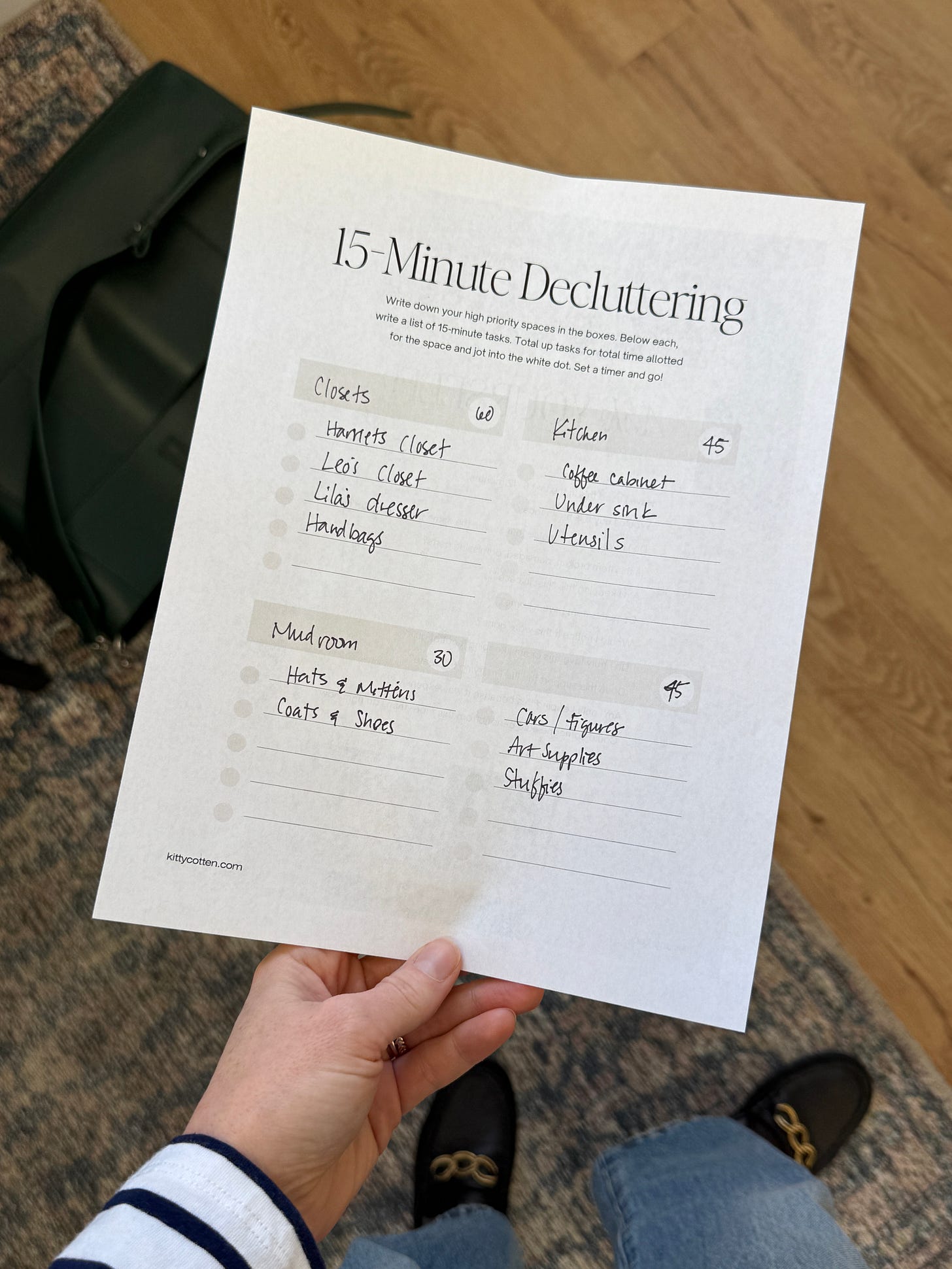
Here’s how I do a seasonal declutter:
(Download my 15-Minute Decluttering PDF)
I focus on high traffic areas or daily touch points—for our home that’s the kitchen, closets/dressers, laundry room, kids toys and crafts, and our mudroom/garage drop area for our coats, shoes and bags. I made a handy little PDF for organizing your decluttering process. You can use my PDF or just a piece of paper and write out a list of the spaces that are high priority for you. Then, under the room name write out the subtasks that will take you 15 minutes or less to complete. Total up the time you need for each space and write it at the top next to the room name. This way you can see how much time you need to declutter each area of your home and plan accordingly.
Now, that I have each space and it’s corresponding time to complete and list of tasks I can fit or schedule them into my life. I usually focus on only one or two areas at a time. If have a whole day to focus on decluttering I can probably get it all done in a few hours, but the norm is usually a half hour here-and-there spread out through a week. Having a list with time stamps helps me be more strategic when decluttering and realistic about my time.
Let’s say I want to spend an hour today decluttering. I look at my list and see “closest” fits into that window. I’ll break that hour into 15 minute blocks—15 minutes to declutter my oldest daughter’s closet, 15 minutes for my son’s dresser, 15 minutes for my youngest daughter’s dresser and 15 minutes for my handbags (which is something that’s been on my list for awhile now). Then set a timer and go!! This part is KEY. If I declutter without a timer I can easily spend an hour somehow only in my daughter’s room. I might see her bookshelf is messy and could use a quick declutter, but that’s not on my list and it will just end up draining my decluttering momentum and time.
Staying focused on the key areas/tasks you’ve already decided are high priority is essential to avoid decluttering overwhelm and burnout. Not every area of my home is “minimal” or “decluttered” and I’m okay with that. I can make a mental note or jot it down in my notes app as an area to work on when I have another 15 minutes of free time that I want to spend decluttering.
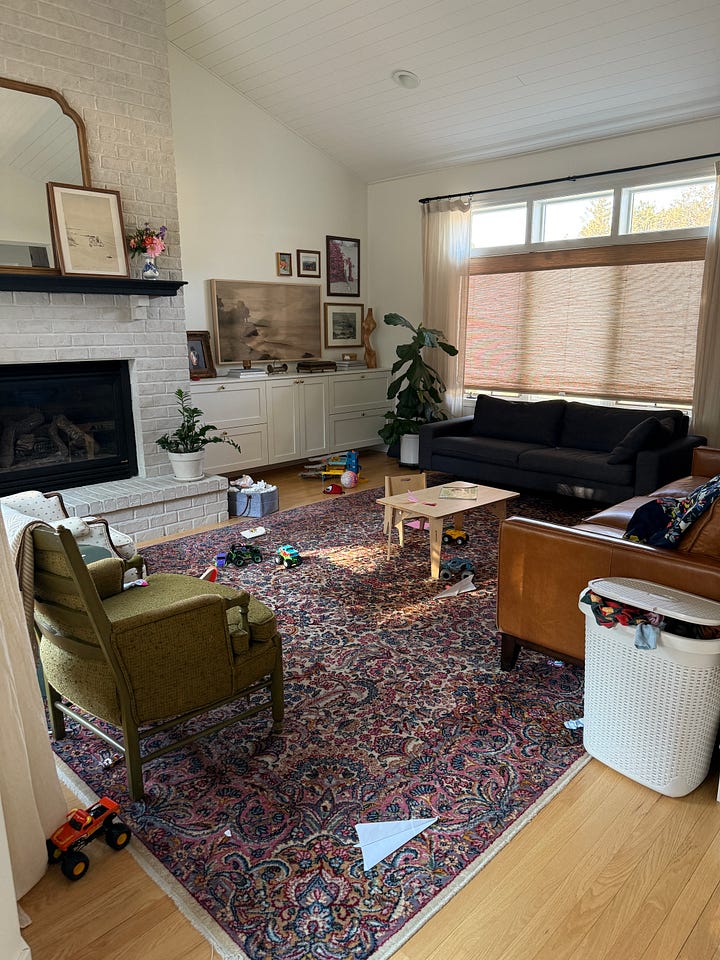
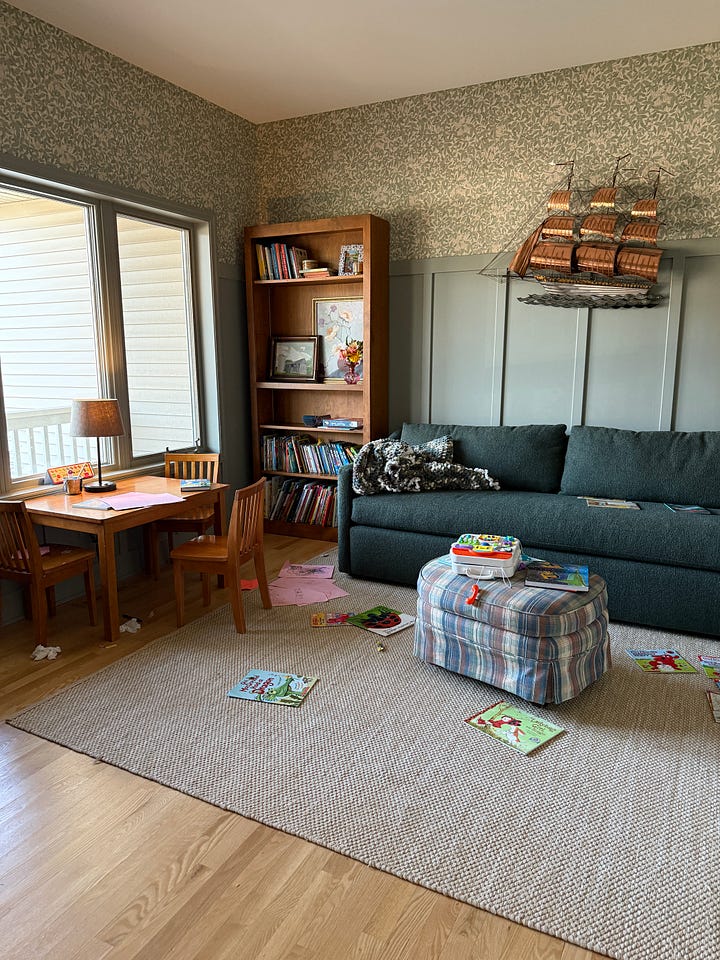
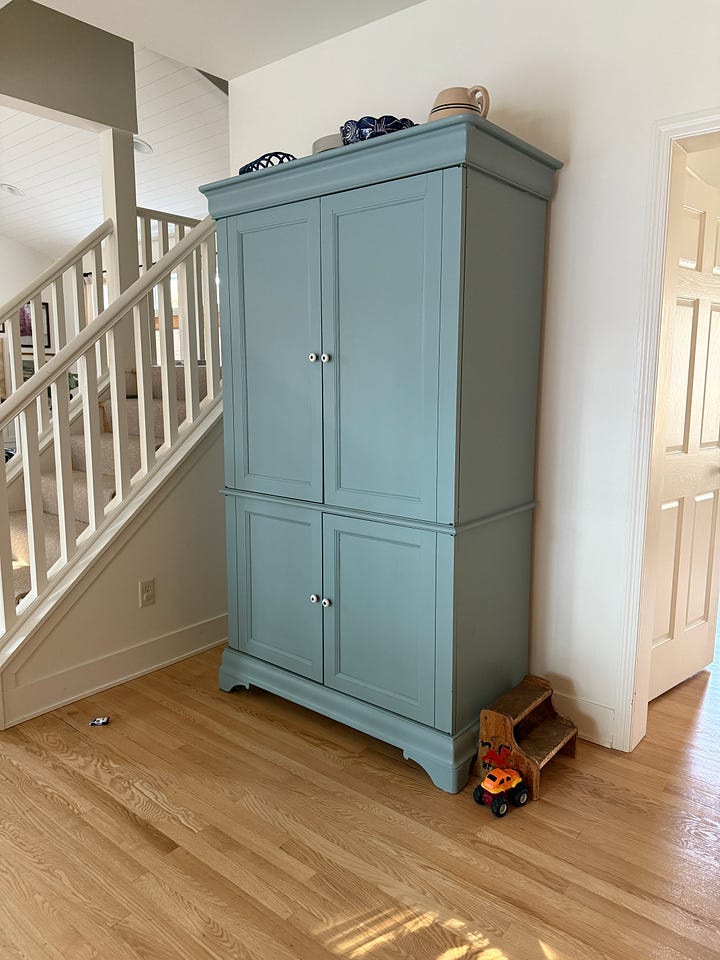
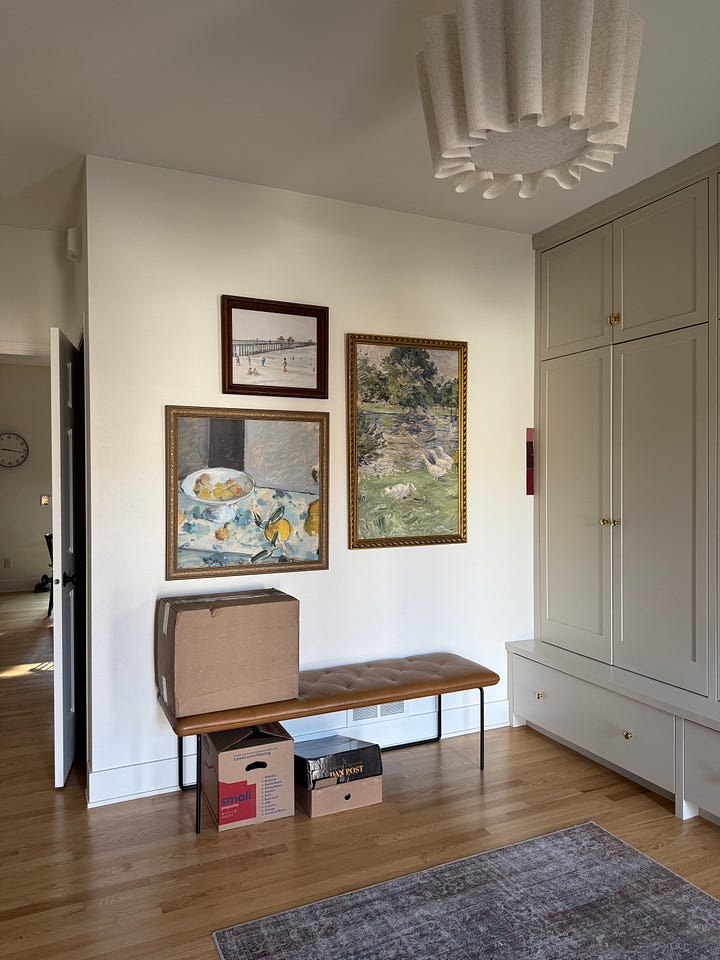
How I go through the items in the space:
Set my timer
Take everything out
Wipe down the space if needed
Remove the immediate no items and put into trash or donation box.
Put back the immediate yes items.
You should now have a maybe’s pile in front of you. This is when things can get tricky. You have to set your emotional attachment for the pieces aside and look at them objectively and ask yourself some of these questions:
Have I used this in the last 6–12 months?
Would I buy this again today?
Do I have something else that serves the same purpose better?
Is this item broken, damaged, or missing parts?
Am I keeping this “just in case”?
Does this item have a home?
Would I notice if this were gone?
Do I truly love this or am I keeping it out of guilt?
Does this support the life I’m trying to create?
Am I only keeping this because it was expensive?
Could someone else benefit from this more than I do right now?
Try to go through your maybe pile quickly, spending only a few seconds on each item. The benefit of the timer is it forces you to make quick decisions, which can help cut down on the time our brain has to justify keeping the item out of an emotional attachment. If I’m truly undecided on an item I’ll keep it. I’ll try and make a mental note of the the item to see if I *actually* use it before my next seasonal declutter. If I haven’t in that time—it gets donated.
Repeat this process until I’ve gone through my master list of high traffic and high priority areas. By having a list of spaces and allotted time slots for the decluttering work, I can usually get this done in a week or two’s time. Having a list like can be helpful to share with your partner or kids so they can easily see what needs to be done and how long it will take. Delegate as needed too!
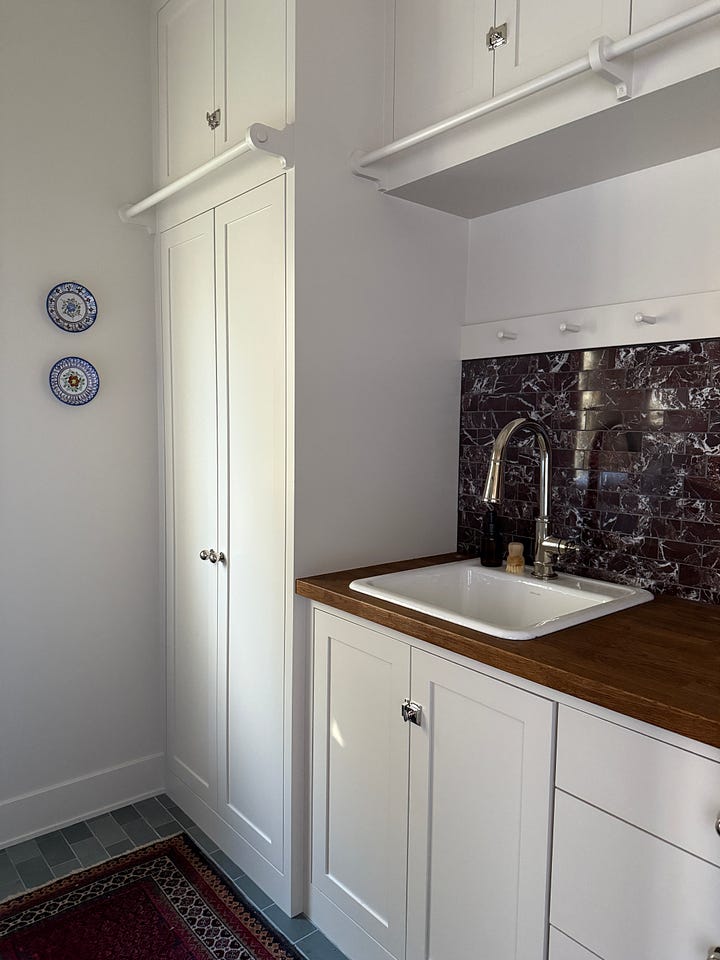
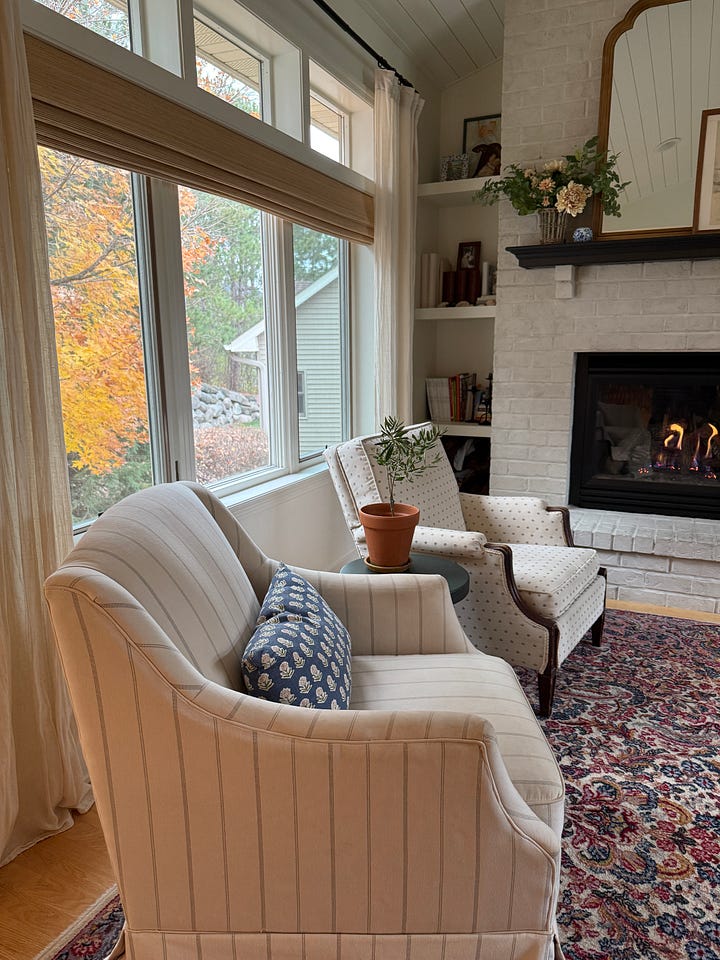
How I maintain our home between larger seasonal decluttering sessions:
I have a dedicated bag or basket for donates—one upstairs in my closet and one downstairs near our garage. When I see an item we no longer need or want I just toss it into the bag. My kids know this basket exists and occasionally my oldest (7) will bring me an item she no longer wants or will put it in the basket herself.
Once the basket is full bring it to the thrift shop ASAP. This seems obvious, but often times our donations can sit in a pile somewhere and just stay put. I use the full bag as my cue to put it’s contents into my trunk and bring it to the charity shop in the next day or two.
Tackle small 15-minute tasks throughout my week/month of the churn spots. This is just the repetitive task of maintaining order in areas like mail, vitamin/medicine cabinet, junk drawer, fridge, pantry, my craft room, and kids creations/art suppleis. I try to keep the maintenance of these spaces to 15 minutes or less. These are the areas in your home that you will never be “done” because the contents is always flowing in-and-out. I try to tackle these churn areas frequently so they continue to only need 15 minutes or less of my time to maintain.
Catch all basket. A few months ago I added a catch all basket to corral random toys and things that get scattered through out our main level. I just do this on our main level, because that’s the area we use the most. When my house feels like it’s a bit crazy and there are kid’s toys, creations and random bits around, I just throw it all in the basket. I will take the basket at a later time and put the things away. Sometimes things live a long time in the basket because it doesn’t have a home. I know then it’s time to either find it a home or more likely, donate or toss it depending on the item. This basket handy in a pinch when you need to tidy quickly before guests arrive or just need a quick pickup to reset your day.
I hope this article has you feeling inspired and less overwhelmed by the process of decluttering your home! If you have any decluttering tips I’d love to know them in the comments or any specific topics you’d want me to share about.



How does it feel to have such a gorgeous, cozy home? You did that! 👏
I love the question ‘does this support the life I’m trying to live?’ !!!